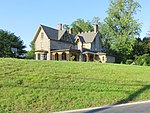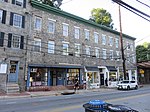New Cut Landfill
Located in Ellicott City, Howard County, Maryland, United States, New Cut Landfill, is also referred to as Worthington Park, Worthington Dog Park, and Worthington Elementary. Rock Hill College operated a recreation facility named "Forty Acres on New Cut" between 1894 and 1922.The 83 acre new cut landfill closed in 1980. In 1985 the county sought bids from a Pennsylvania company to burn methane gas in generators. New Cut groundwater was found to be contaminated from deposits of paint solvents. In 1993, the county approved installation of city water around New Cut after contaminants including trichloroethane exceeded federal drinking water levels.In September 2011, 2,000 solar panels were installed on landfill property converted to parkland and later a solar farm. The panels were paid for by a Maryland Department of Energy Grant.
Excerpt from the Wikipedia article New Cut Landfill (License: CC BY-SA 3.0, Authors).New Cut Landfill
Doncaster Drive,
Geographical coordinates (GPS) Address Nearby Places Show on map
Geographical coordinates (GPS)
| Latitude | Longitude |
|---|---|
| N 39.2475 ° | E -76.796388888889 ° |
Address
Worthington Elementary School
Doncaster Drive
21043
Maryland, United States
Open on Google Maps




